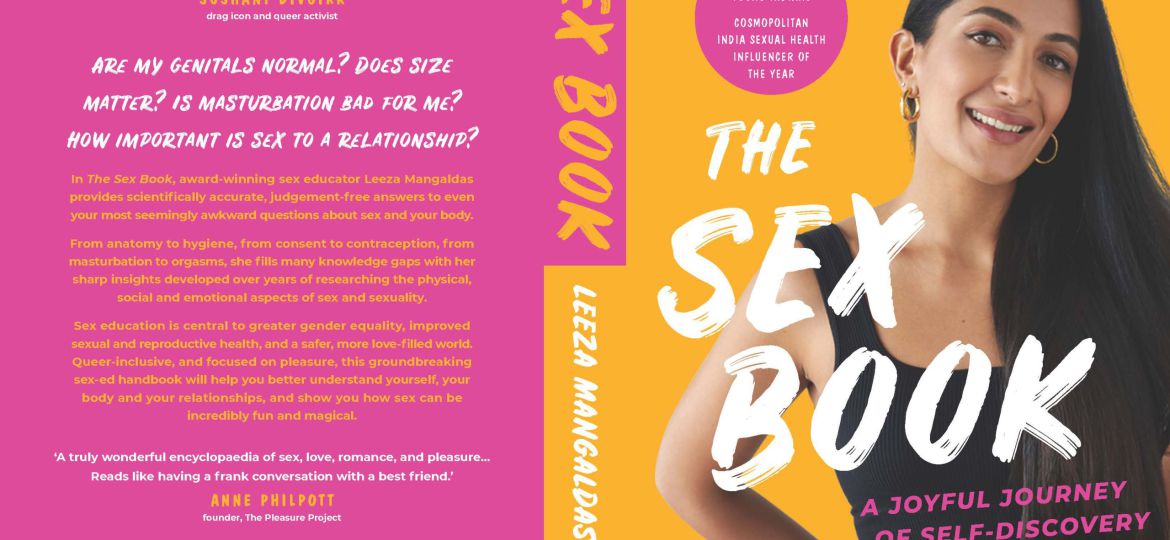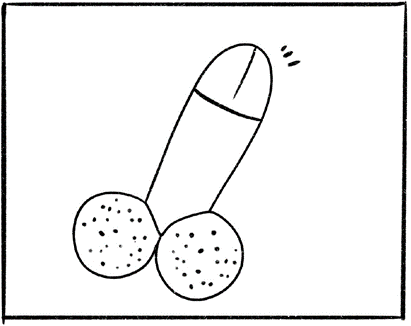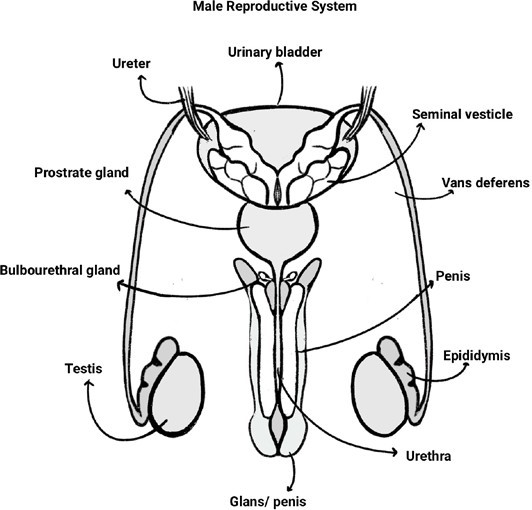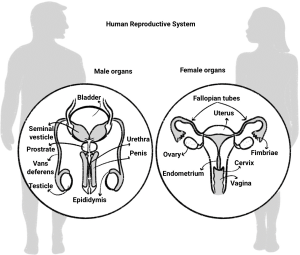
Excerpted with permission from The Sex Book (2022) by Leeza Mangaldas, HarperCollins India, Rs. 399
I had my first sexual experience in the winter of my freshman year in college. I was dating a really sweet guy, my first real ‘boyfriend’. A few months into the relationship, we decided we were ready to ‘do it’.
We wanted ‘it’ to be special, so we made a reservation at a nice restaurant for dinner that weekend, and the plan was to then come back to my dorm room, light candles and play soft music, get naked, and see where things go. We bought condoms, fresh strawberries and a can of whipped cream—all in anticipation of our upcoming adventure.
Dinner was entirely lovely and romantic, and back at my dorm room, after we’d been kissing and cuddling for a while, I decided it was time to get up close and personal with his penis, so I sidled halfway down the bed and began undoing his pants. But when I found my actual face a few inches away from an actual penis and scrotum, I was woefully ill-equipped to make sense of what I saw.
Coming into that experience, I knew so little about what real genitals look like. Mine is probably the last generation to have grown up without smartphones. I had never watched porn. This was the first time I was seeing an actual penis. And I was expecting to see two testicles, but I could see only one.
I’d only ever seen drawings of penises like the sort people would make on the chalkboard when the teacher wasn’t looking: two circles and a long oval. Even the diagrams in the chapter on the reproductive system in Bio class—I was a total nerd and could label them perfectly—didn’t prepare me for what real balls actually looked like.


Credits: Ipsita Divedi
I was expecting there’d be two separate spheres under his penis, not two spheres in one bag that can almost seem like one large blobby sphere.
I tried my best to keep a straight face, but my head was a muddle of confusion and curiosity.
(Younger me was much less aware of genital diversity, and even less so of the notion that if he did have only one ball, it’s not a big deal.)
Not wanting to embarrass him, or myself, I closed my eyes and placed my hands on his penis, and as I felt around, it dawned on me.
‘Ohhhh he does have two balls—they’re both just packed into one sac! OHHHHH!!!!’
That’s how eighteen-year-old me learned about the scrotum.
So I can empathize with the thousands of questions and concerns I receive from people worried about whether their genitals are normal. Here is just a small sampling:
‘My penis is small and a little curved, should I be worried?’
‘I think one of my testicles is slightly bigger than the other, am I a freak?’
‘My clitoris is tiny and hard to find, totally hidden under the hood, is something wrong with me?’
‘My inner labia dangles and protrudes outward, it looks nothing like the lady bits I’ve seen in porn.’
‘My foreskin droops over the top of my penis when I’m not erect.
I’m afraid it looks weird.’
Our genitals are as diverse as our faces. Since we get to see hundreds of thousands of faces over the course of our lives, we know that facial features can take all kinds of shapes and colours and textures and combinations. We don’t see people’s genitals nearly as often. And many of us, particularly people with vulvas, may never even have taken a close look at our own. There’s actually a lot of variation in terms of how external genitalia can look—there is no single right colour, size or shape. Everyone has their own unique features.
Perhaps internet porn has now changed that in some ways—we have easier access than ever before to imagery of sex and genitalia. But most mainstream porn performers are white, and many have had plastic surgery, pubic hair removal, anal bleaching, and other such procedures—after all, in many cases, their income depends on how closely their bodies conform to the archetypal porn aesthetic.
Fortunately, there are now more independent adult filmmakers prioritizing an authentic representation of diverse identities, sexualities and body types, in ‘ethical’, ‘feminist’, ‘indie’ porn. But most of the performers in mainstream big- studio-produced porn still likely either fit a rather narrow ‘pornstar’ archetype, or are fetishized for looking a certain way if they don’t.
In the absence of comprehensive sex education in schools, and a reticence around talking about sex at home, young people either have no really accurate reference points for understanding sex and the genitals as they come into their own first sexual experiences (like the younger me), or—and this is much more likely, given the ubiquity of smartphones and the internet now—it’s the free, mainstream internet porn where men have huge penises and women have huge breasts and hairless vulvas and men can go on for hours and the acts are often overwhelmingly violent and misogynistic— that becomes the inevitable first visual reference point.
In high school Biology lessons (if your school didn’t skip the chapter altogether), we are taught about sex only in the context of reproduction. We may see a diagram of the insides of a penis and the testes perhaps, and we may see the uterus and the ovaries perhaps, and if we are lucky, we may even see a little canal labelled the vagina, but we rarely see properly labelled diagrams of the external genitals, particularly the vulva (or the scrotum, for that matter!) And we certainly never even hear about the clitoris.
If we did get taught the chapter, we’re likely to have seen a diagram like this:

As a result, most of us think that men have a penis (and if you’re like me, two SEPARATE balls—I mean just look at how far away they seem in this diagram—can you blame me for not realizing they’re both in the same sac?) and that women have vaginas, and the ‘female’ equivalent of the ‘male’ penis is the vagina, and that sex equals penis-in-vagina.
But this is a highly oversimplified portrayal of gender, the genitals and sex.
Neither mainstream porn nor the reproductive system lesson in most schools tells you what you need to know about sex and the body, health and pleasure and identity, in a way that makes this stuff feel normal, comfortable, easy to understand, safe and worthy of exploration.
We’re constantly told about men and women and male and female bodies as if they’re totally disparate categories. But get this: as foetuses, we all start off exactly the same, with the exact same genital tissue.
We all begin with a little genital tubercle and a labioscrotal swelling that then goes on to become either more like a clitoris and vulva or more like a penis and scrotum as we develop in the womb.
As Emily Nagoski, internationally celebrated sex educator and author of the ground-breaking book Come As You Are likes to say: ‘We are all made of the same parts, just organized in different ways.’
The book is available on Leezus.com and on major e-commerce marketplaces and bookstores nationwide
Cover Image: Courtesy of HarperCollins India